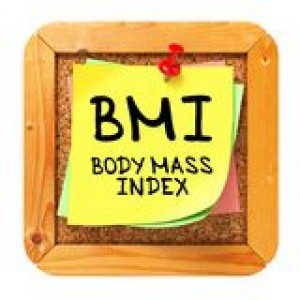News
EFSA turns down CLA claims
12 Jan 2015Following an application from BASF SE and Stepan Lipid Nutrition, submitted for the authorisation of a health claim pursuant to Article 13(5) of Regulation (EC) No 1924/2006 via the Competent Authority of the Netherlands, the EFSA Panel on Dietetic Products, Nutrition and Allergies (NDA) was asked to deliver an opinion on the scientific substantiation of a […]

 Following an application from BASF SE and Stepan Lipid Nutrition, submitted for the authorisation of a health claim pursuant to Article 13(5) of Regulation (EC) No 1924/2006 via the Competent Authority of the Netherlands, the EFSA Panel on Dietetic Products, Nutrition and Allergies (NDA) was asked to deliver an opinion on the scientific substantiation of a health claim related to an equimolar mixture (marketed under the trade names of Clarinol and Tonalin) of the two conjugated linoleic acid (CLA) isomers c9,t11 and t10,c12, and “contributes to a reduction in body fat mass”.
Following an application from BASF SE and Stepan Lipid Nutrition, submitted for the authorisation of a health claim pursuant to Article 13(5) of Regulation (EC) No 1924/2006 via the Competent Authority of the Netherlands, the EFSA Panel on Dietetic Products, Nutrition and Allergies (NDA) was asked to deliver an opinion on the scientific substantiation of a health claim related to an equimolar mixture (marketed under the trade names of Clarinol and Tonalin) of the two conjugated linoleic acid (CLA) isomers c9,t11 and t10,c12, and “contributes to a reduction in body fat mass”.
The scope of the application was proposed to fall under a health claim based on newly developed scientific evidence.
The food that is the subject of the health claim is Clarinol or Tonalin, which provide a minimum of 78 % of total fatty acids as CLA and a minimum of 74 % of total fatty acids as the two CLA isomers cis‑9,trans‑11 (c9,t11) and trans‑10,cis‑12 (t10,c12) at an equimolar (1:1) ratio. The Panel considers that the food, an equimolar mixture of the CLA isomers c9,t11 and t10,c12, marketed under the trade names of Clarinol and Tonalin, is sufficiently characterised.
The claimed effect is “contributes to a reduction in body fat mass”. The target population proposed by the applicant is “healthy overweight or class I obese male and female adults, either sedentary or physically active, who wish to reduce their body fat mass”. The Panel notes that an excess of body fat, and in particular of abdominal fat, is associated with adverse health effects, e.g. impaired glucose tolerance, dyslipidaemia and high blood pressure. The Panel also notes that a reduction of body fat through energy (i.e. caloric) restriction and/or through an increase in energy expenditure (i.e. physical exercise/activity) is generally accompanied by an improvement of such adverse health effects. In this context, the Panel considers that a reduction of body fat, with or without a reduction of body weight, is a beneficial physiological effect for overweight subjects in the general population.
In previous assessments on the safety of these equimolar isomeric mixtures (c9,t11 and t10,c12) of CLA (marketed as Clarinol and Tonalin), the NDA Panel considered that the observed increase in plasma and urinary concentrations of isoprostanes, which may indicate an increase in lipid peroxidation, and the increase in some markers of subclinical inflammation (i.e. 15-keto-dihydroprostaglandin F2α and possibly C‑reactive protein) associated with CLA consumption, together with the limited data available on the effects of CLA on vascular function, may indicate a potential for vascular damage (i.e. atherosclerosis) in the longer term.
In this context, the applicant was requested to clarify how a reduction in body fat mass, when accompanied by an increase in markers of lipid peroxidation and subclinical inflammation, could be considered a beneficial physiological effect for the target population. In reply, the applicant argued that “Clarinol and Tonalin are intended to be used for a period of 6 months to achieve the claimed effect, and that within this dosing duration, there are no adverse effects on insulin sensitivity/glucose metabolism, blood lipids, lipid peroxidation, or subclinical inflammation within the target population (i.e. otherwise healthy overweight or class I obese adults)”.
The Panel notes that, although consumption of the equimolar isomeric mixture of CLA for six months was considered safe for normal-weight, overweight and obese non-diabetic subjects, an increase in lipid peroxidation and in markers of inflammation was observed within a time frame of six months. The Panel also notes that the applicant did not provide evidence or a rationale for how a reduction in body fat mass, when accompanied by an increase in markers of lipid peroxidation and inflammation, could be considered a beneficial physiological effect for the target population.
The Panel considers that the information provided by the applicant does not establish that a reduction in body fat mass, when accompanied by an increase in markers of lipid peroxidation and inflammation, is a beneficial physiological effect for the target population.
The Panel concludes that a cause and effect relationship has not been established between the consumption of an equimolar mixture of the CLA isomers c9,t11 and t10,c12, marketed under the trade names of Clarinol and Tonalin, and a beneficial physiological effect.
